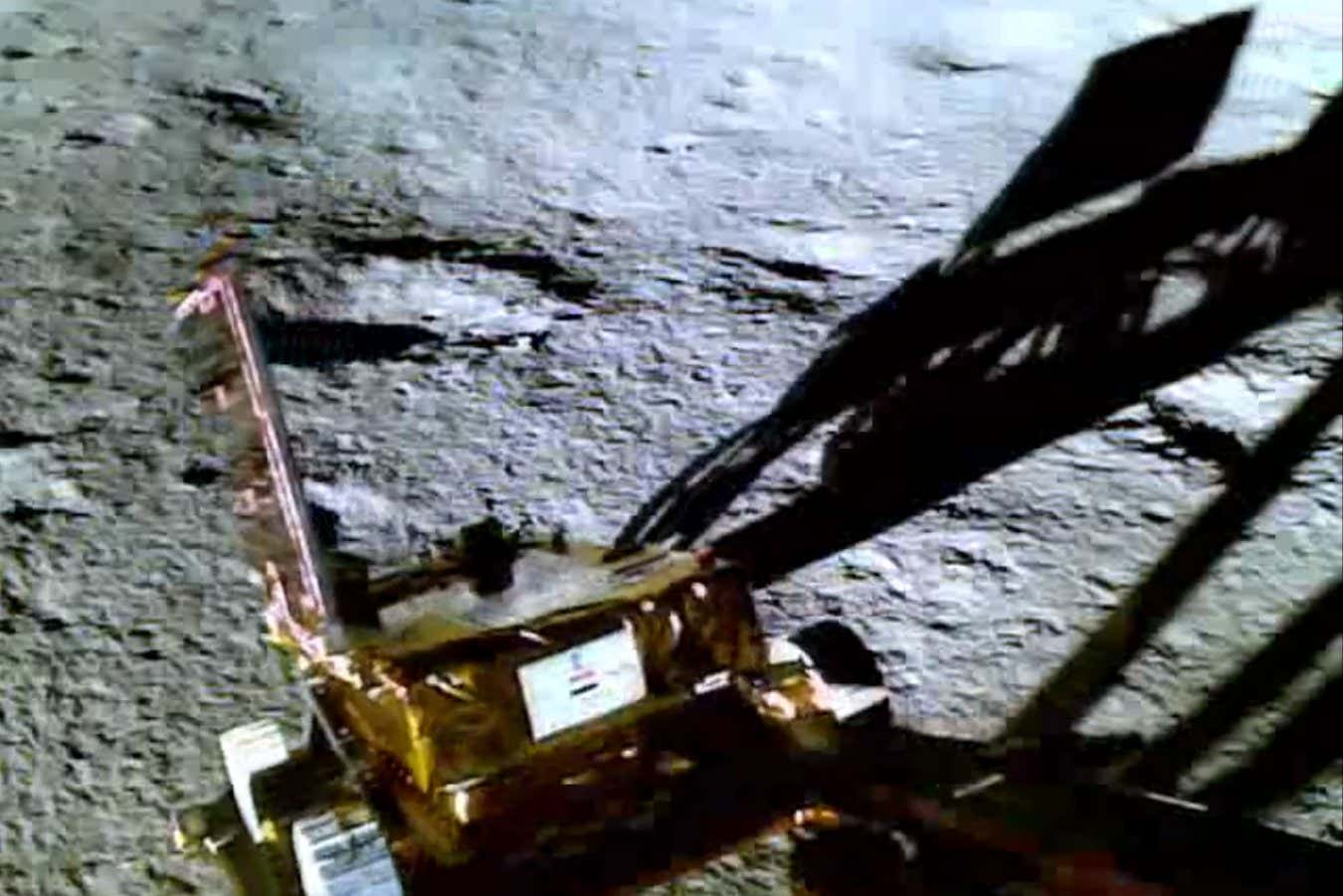After the Chandrayaan-3 mission’s historic landing on the moon, the Indian Space Research Organisation’s rover has begun researching the composition of the surface and investigating water ice near the lunar south pole
By Matthew Sparkes
25 August 2023
Chandrayaan-3’s Pragyan rover going down a ramp from the lander to reach the surface of the moon
ISRO
India’s historic Chandrayaan-3 moon mission is now exploring the lunar surface near the south pole. Buoyed by the successful landing, the country is looking to push ahead with putting a human in space and sending a craft to Mars.
Four hours after the Indian Space Research Organisation (ISRO) mission landed on 23 August, and the sun had risen on the landing site, Chandrayaan-3 lowered a ramp and the six-wheeled Pragyan rover, which weighs just 26 kilograms, rolled on to the lunar surface.
Advertisement
Over the next two weeks, the rover will carry out experiments to research the composition of the surface with its Alpha Particle X-Ray Spectrometer and look for water ice, which has the potential to provide a future crewed base with drinking water, oxygen and fuel for spacecraft.
Read more:
India’s Chandrayaan-3 mission has landed near the moon’s south pole
Both the lander and the rover are expected to operate for one lunar day (equivalent to 14 Earth days) before sunset cuts its ability to harvest energy from solar panels. ISRO hasn’t ruled out the possibility that both will be revived once the sun rises after two weeks of darkness and temperatures that will dip to – 238°C (-396.4°F), but this would be a bonus.
